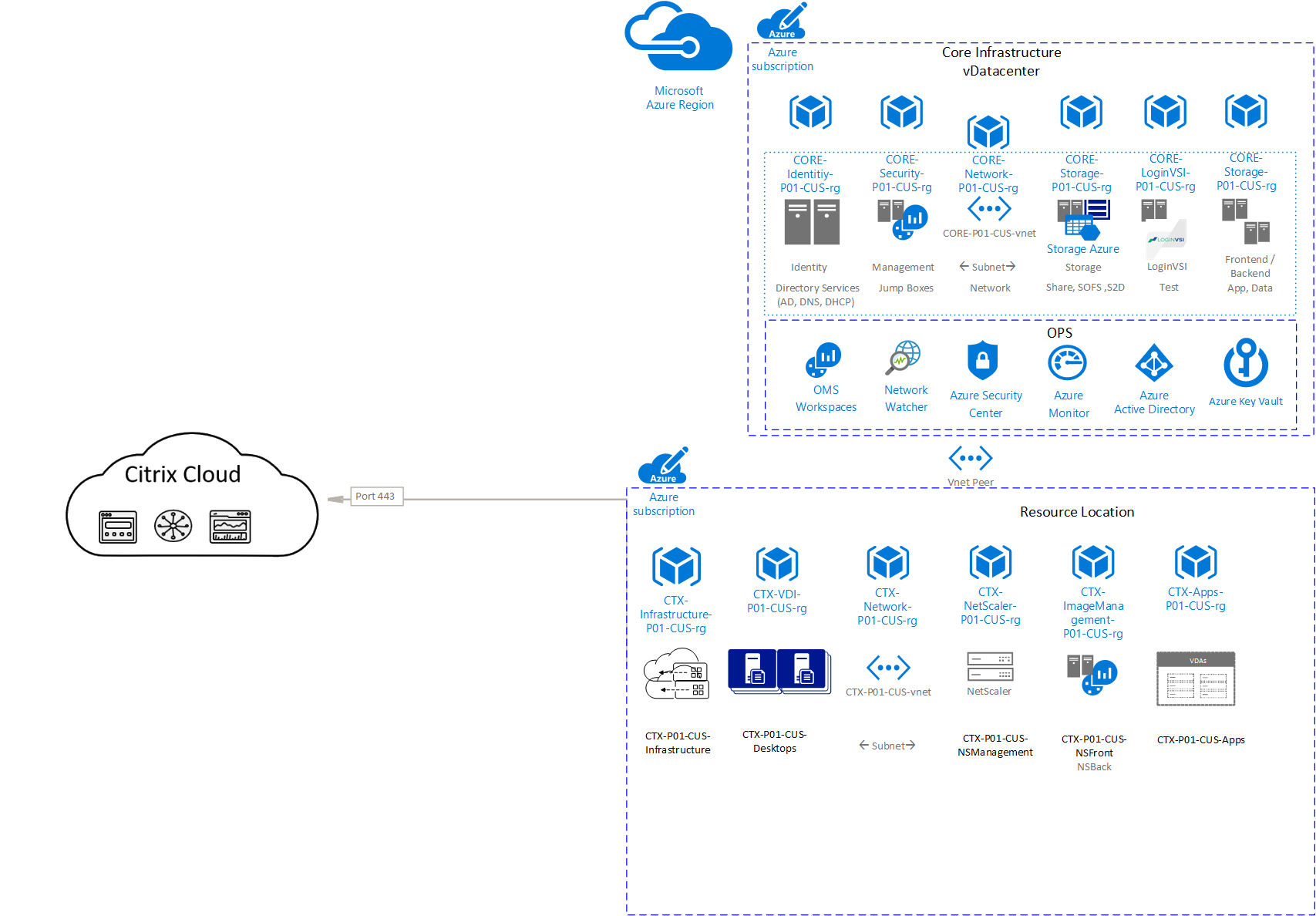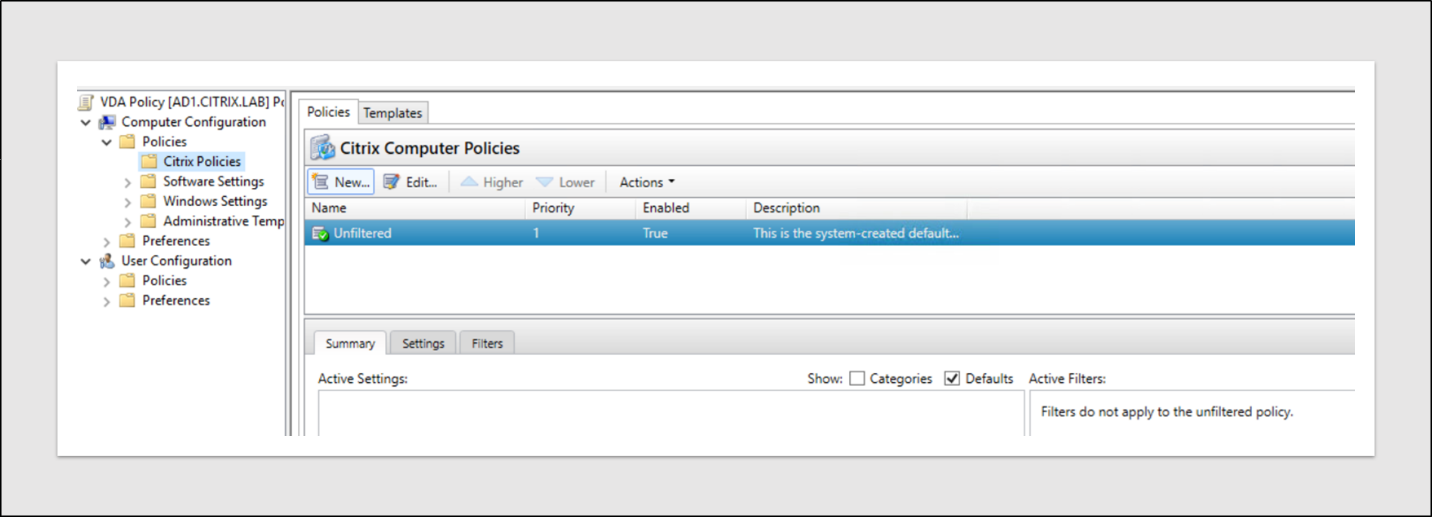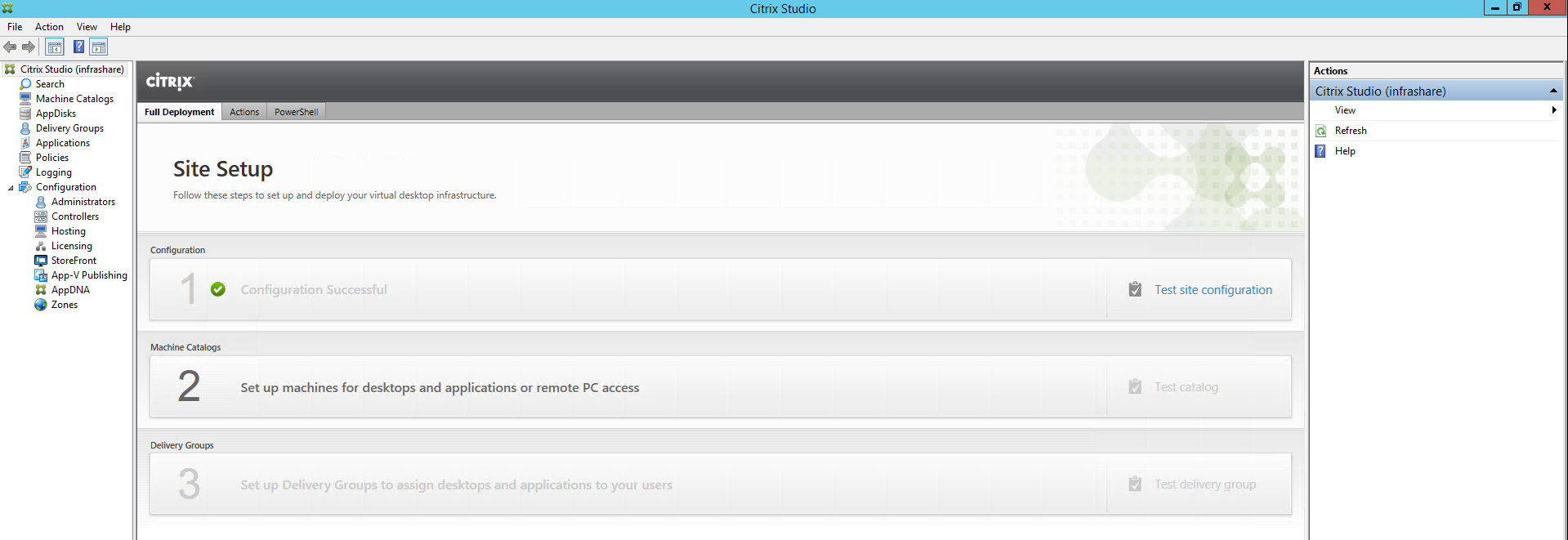If the service package purchased is Citrix Cloud Add-on, you will receive term on-premises User/Device licenses for the term of your corresponding Citrix Cloud subscription. Notwithstanding the foregoing, only those users or devices covered by your Citrix Cloud subscription may use on-premises term licenses to connect to the Citrix Cloud Services. Afternoon all, I am trying to link Citrix Cloud in with a clients local VMware infrastructure to support MCS. I am able to add the connection and resources to the point where it then wants a network selected but nothing is available. The connection to the hypervisor works ok, i am able to see the. Citrix combines virtualization, networking and cloud technologies with collaborative services into a full portfolio of products that enable mobile workstyles for users and virtual datacenters for IT. Our wide range of product editions, licensing models and maintenance plans ensures you can find the right purchase options for your organization. Overview of Citrix Machine Creation Services (MCS) Citrix Machine Creation Services is an orchestration component of Citrix Virtual Apps and Desktops that can provide single image management for shared or dedicated machines. MCS dedicated workloads are a “deploy once and leave alone” methodology from Citrix and as such, keeping the machines in an MCS catalog serves little to no purpose once deployed outside of some optimized power management calls to Azure.
Two weeks ago I went to Citrix Synergy in Anaheim. Here Citrix announced the future vision of the company. And the vision is clear, it is CLOUD. Citrix now thinks of itself as a cloud company. And with their new Citrix Workspace they have a great cloud product. But how does automation fit into the cloud and what can we automate? In this blog I will try and answer that.
During Synergy Citrix also announced Azure Quick Deployment capability from the Citrix Cloud environment (more on Quick Deployment here from christiaanbrinkhoff.com). If you use quick deployment, the Citrix Cloud will automatically make the resource groups and virtual networks in Azure. And by using the Citrix Cloud itself you automatically get a Citrix Site, Delivery Controller, Workspace (Storefront) etc. So what’s left to automate ? Well the Master Image/ VDA offcource.
During a Synergy session, I heard a presenter say: “The last part is easy. Just create a master image and you’re done.” But creating a good master image can take a lot of time, especially if there is a need for a lot of local applications. It is a best practice to automate the creation of your master image. That’s why I created the Ultimate Golden Image Automation guide. But this guide uses an on-prem VMware and Citrix Provisioning environment. For the cloud, we need a new process, one that uses Microsoft Azure and Citrix Machine Creation Services. A great thing about this is that they both can be managed with Microsoft PowerShell. If we combine the right PowerShell commands we can make a new automatic master image deployment scenario.
The new master image deployment scenerio goes as follows:
- Create a new Azure Virtual Machine
- Deploy VDA and software on the Virtual Machine
- Update Machine Catalog from the new Virtual Machine
- Delete the Virtual Machine and its resources
Deleting the VM is not entirely necessary but helps reducing cost. Consistency is key during the automation process so starting with a new Azure VM will help.
The first thing we need to do is to install the Azure remote management PowerShell modules. This requires PowerShell 5, so if you have a Windows 2012R2 or Windows 8.1 machine you need to update to PowerShell 5, which you can download here. After that you can run the following script to install the modules.
After the installation is completed you need to import the module with the following script.
Now, we need to connect to the Azure tenant so that we can deploy a virtual machine. The script below will ask for your credentials. You could change the script to make an object from your credentials, so it connects automatically.
Now that we’re connected, we need to create the new Virtual Machine that is to become the new master image. We do this with the following script.
Because we’re going to use this new Azure virtual machine in a software deployment scenario, we need to know the private IP address of the virtual machine. This IP address is assigned randomly (DHCP). We can get the private IP address with the following script.
We need to push an automation agent to the Azure Virtual machine so that we can deploy our software. That’s why we temporarily need to disable the Windows Firewall on the Azure virtual machine. It is not possible to run a script directly on an Azure virtual machine, but you can use a Custom Script extension. The script below will create a small PowerShell script in c:temp. Then upload it to your Azure storage account and then create a Custom Script extension to be run on the Azure Virtual Machine which uses the script from your storage account. After this the Virtual Machine will be rebooted. And now you can push your Automation agent (Ivanti, SCCM, etc..). Don’t forget to enable the firewall once you’re done.
The Azure virtual machine is created with a public IP address by default but we’re not going to use this. The following script will delete the public IP.
Now that we have a new Azure virtual machine, the private IP address, credentials, and the firewall is temporarily turned off. We can start deploying software and, of course, the Citrix VDA Software. You can do this with PowerShell or your own favorite automation product. You can also use my Ultimate Golden Image Automation Guide for software deployment tips and silent parameters. To install the VDA, you can check out this great article by Dennis Span or see the Citrix install command web page. And of course, don’t forget to optimize your image with the Citrix Optimizer and to seal your master image the right way with BIS-F (Base Image Sealing Framework).
After deploying all the software and installing the VDA, it’s important to stop the Azure virtual machine before you update your machine catalog. You can do this with the following script.
Now that we have created a new master image, we need to update the Machine Catalog. If you run your own delivery controller in Azure or even on-premises, you can use the script below on any machine with Citrix Studio installed. If you use Citrix Cloud services you need to install the Citrix Cloud Remote PowerShell SDK. After installing the SDK, you can connect to your Citrix Cloud environment with the Get-XdAuthentication and then run the script.
Now that the catalog is updated, there is no need to keep the Azure Virtual Machine and its resources; we can delete it with the following script:
When you use the cloud and automation we need to enter credentials a few times. Make sure to never save your credentials as plain text in your scripts. Recently, there has been an increase in Azure account hijackings for mining cryptocurrency. Try to use a password vault or, at the very least, encrypted passwords. I have my script repository in my Ivanti automation library and I use password variables that are stored, encrypted, in the automation database. Another important thing is the Azure virtual machine credentials we created in the new virtual machine step. Once created, these admin credentials are on every machine you produce from the master image. So, don’t forget to disable the credentials with Disable-LocalUser or to remove them with Remove-LocalUser and add a new secure account.
I hope this was informative. For questions or comments you can always give a reaction in the comment section or contact me:
This post has already been read 687542 times!
Intro
Considering recent published articles surrounding Citrix Cloud I think it is important to remind institutions out there of the benefits. I will highlight (very briefly) 13 advantages about the Citrix Cloud (There are many more) and provide a link to a great article by fellow CTP Nicolas Ignoto on feature requests that should be incorporated in to the solution.
SQL Backend
This is a big one. If you have multiple resource locations on premises traditionally you are wanting multiple SQL servers for your Xenapp Sites back end. Moving to Citrix Cloud eliminates this. You also now can use WEM as a fully integrated cloud service meaning you do not have to worry about costly SQL. Have you checked how much SQL costs in Azure?
High Availability
All infrastructure is HA (Highly Available). Your Desktop Delivery Controllers (Brokers), license Servers, Studio, Director, SQL. Think of the comparable cost with IAAS or on premises.
Automatic Patching
All infrastructure is automatically upgraded. Citrix takes care of this for you eliminating the need to plan patch management. Hotfixes and Security patches are not your worry when it comes to the infrastructure components.
Always Latest Software
The infrastructure components are automatically upgraded to latest Citrix versions. You are on latest technology that is thoroughly tested before deployment. You get latest features and improvements.
License Usage
With the Citrix Xenapp and Xendesktop Service you can easily control your license usage. The licences are user licenses as there is no concurrent unless you subscribe to the full Workspace services, however you do get 2 for 1 trade up deals and hybrid rights usage. This allows you to continue using your on premises solution whilst migrating (testing) the Citrix Cloud. At time of writing I believe you have a 3 year transition period. The other advantage is you are eligible to release licenses after 30 days compared to 90 days for on premises environments.
Unified Management
You can easily manage multiple resource locations from one single unified management plane. This reduces the need for costly infrastructure at multiple site locations.
Smart Scale
You have the ability of controlling costs by using Smart Scale. This helps reduce the cost of your workloads in Azure, AWS or Xenserver (on premises). Think of the way public clouds incur cost by billing per minute. You can now have workloads running only during core operational hours or reduce workloads as users reduce.
Hidden Costs
Hard one to prove but if you think that there is an additional cost with Cloud you should think of the hidden cost savings also. Reduced tin, reduced operational costs, freeing up time and resource to concentrate on other initiatives, not worrying about upgrade cycles, multiple infrastructure in resource locations, easy central management, easy image management, monitoring capability included.
WEM
This will be a fully integrated Cloud service allowing you to improve the workspace experience for your users. Improve logon times by moving GPP to this service. Apply CPU and memory optimisations. The SQL back-end is managed by Citrix.
Smart Check
This is an automatic health check for your site. No need to deploy agents if you have the Xenapp and Xendesktop Cloud Service. You will receive diagnostics on your sites health such as machines in maintenance mode, services that are stopped and any back-end communication issues.

Simple Image Management
You have the ability to use MCS and PVS (on premises) via the Citrix Cloud. (Granted you do have this ability on premises -So maybe this one does not count.)
Cloud Agnostic
You can choose your Cloud of choice. There is no Cloud lock in. Citrix Cloud is public Cloud agnostic. Managing multiple resource locations in different public Clouds is easy.
Easy On boarding and ability to make POC
The time it takes to request a trial is up for debate but when you compare this to the time it takes to get traditional POC concepts running it is not that bad. This will be improved but it is easy to transition a on premises deployment to a running Citrix Cloud Xenapp and Xendesktop Service. We are talking hours and not days here!
Workspace App
Finally, you are able to take advantage of the Workspace experience using the Workspace APP which is an all in one place to go to use multiple resources you need on a daily basis. Whether it is Sharefile apps, Saas Apps, Web Apps, Xenapp/ Xendesktop Apps, on- premises, Cloud etc, you can browse and search for your resource through one easy to use Workspace App experience when linked to the Workspace in the Xenapp and Xendesktop Service.

Conclusion
Citrix Cloud Mcshane

Citrix Cloud Mcs Azure

Citrix Cloud is evolving and is improving and does have its limitations. I feel it is important to highlight some advantages though in the wake of some recent Citrix Cloud bashing. My fellow CTP’s provide a constructive article on the limitations that are being worked upon that is worth a read. The aim for this article is to provide some Yin and Yang to the pro’s and cons of the solution.
